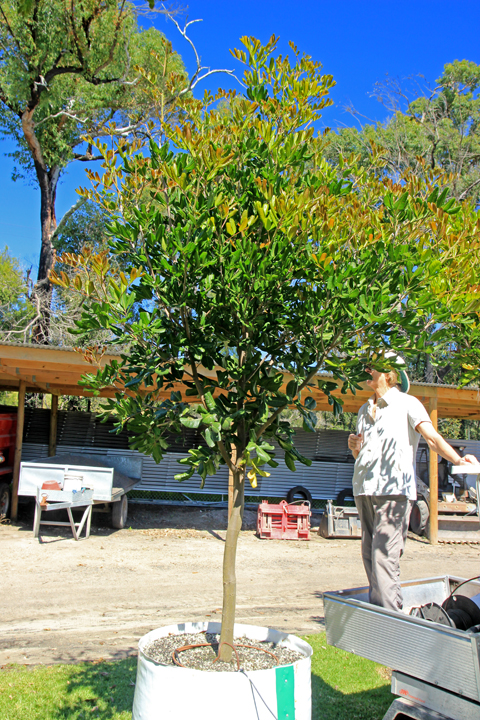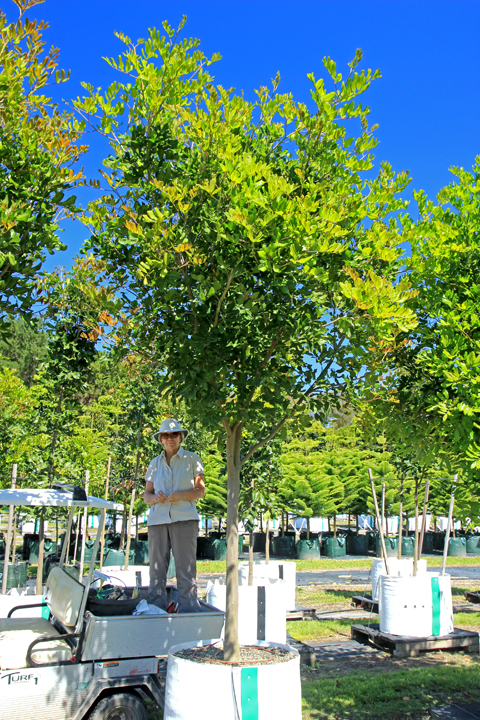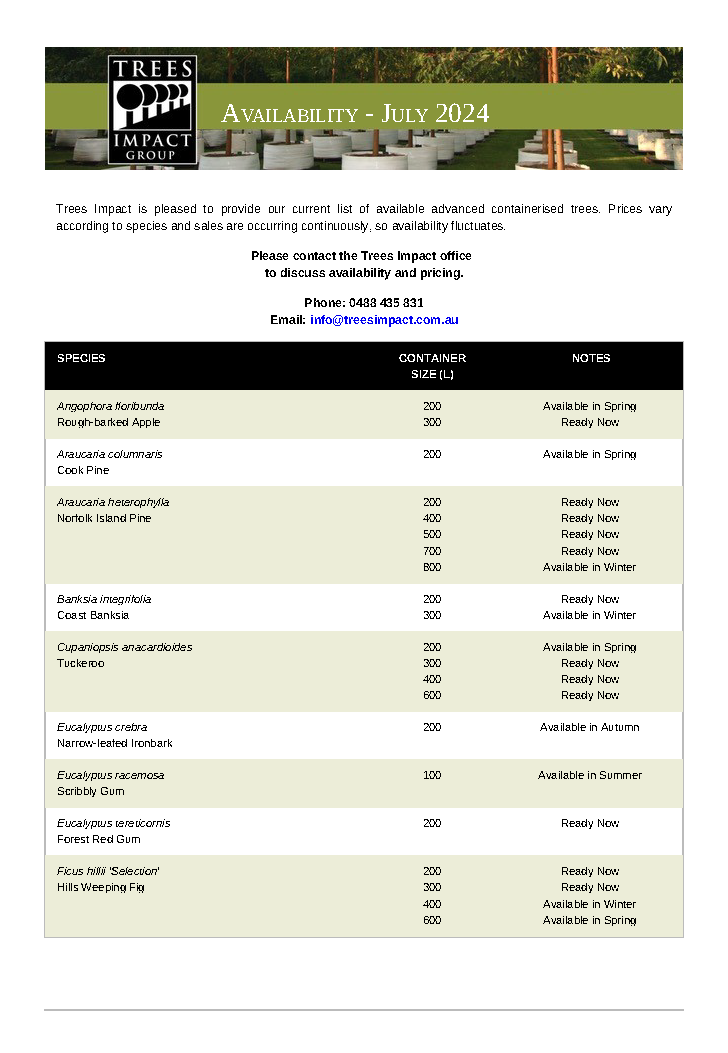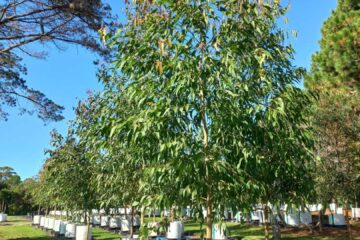Buying big landscape trees – are you paying too much?
How do you compare different prices for what is, allegedly, “the same sized tree”? Is pricing based on container size fair? Is pricing by tree size more fair? What is “pricing by size”? Can “pricing by size” save you money?
Pricing by tree size, as opposed to container size, offers a degree of precision where none otherwise exists – and, particularly with bigger trees, often results in significantly better value for money.
TRADITIONAL PRICING PRACTICES
Traditionally the nursery industry prices trees according to the size of the container the tree is currently in – not the size of the tree itself. The industry has never previously offered measurable criteria as to how much “tree” one is entitled to expect when paying for this or that container size. While not such a great problem with small trees up to, say, 25 litre sizes, the issue becomes an increasing problem as you move up through bigger sizes – where the dollars at stake become more significant.
The position is that, while container sizes might be the same among different growers, there are frequently great variations in the actual tree sizes being offered. What one grower sells as a ‘300 litre’ tree and what the next grower offers in the same sized container can be significantly different. When buying a ‘300 litre’ tree, how much actual ‘tree’ one gets has been a lottery.
THE CONCEPT OF “BALANCE”
It is universally accepted that there is a natural balance between the size of the root system and the size of the above-ground parts of a tree, each being governed by the capacity and needs of the other.
Ross Clark’s “NATSPEC” Specification is the most effective known application of that natural system to the artificial environment of a nursery. In his specification simple guidelines have been established to test whether or not the physical size of a tree is right for the container that holds it.
- If the measured physical size of the tree falls within the optimum range for its container size, the likelihood is that the above ground and below ground parts of the tree are in balance;
- But if it falls below that optimum range, the likelihood is that the roots have not fully occupied that container, the tree is too small and you are paying too much for it.


Both of these Tuckeroos are in 300 litre containers but from different batches. The one on the left is shorter and has a smaller calliper. Its physical measurements put it within the optimum size range for a 200 litre tree. The tree on the right is bigger all round and it sits within the optimum size range for a 300 litre tree under the NATSPEC specification.
PRICING BY “SIZE” V PRICING BY “CONTAINER VOLUME”
Using the Balance Formula in the NATSPEC specification, the Trees Impact sells trees for prices based on the physical size of the trees themselves – not just on the size of the containers they occupy. You get what you pay for.
The following is one example to demonstrate how this works in practice. Assume:
- Trees Impact and Grower ‘A’ each have trees in 300 litre containers.
- In neither case have the trees yet fully grown into those containers.
- Physically both sets of trees, when measured, fall within the optimum size range for, say, 200 litre containers but not 300 litres.
Traditionally Grower ‘A’ would normally sell those “200 litre” trees at his 300 litres price, just because they are in 300 litre containers. Trees Impact, on the other hand, prices and sells such trees not at the 300 litre price but at our 200 litre price only.
Conversely, assume Grower ‘A”s trees are, as above, measuring 200 litres in 300 litre containers, but the Trees Impact ones are fully grown into their 300 litre containers. In that case both will price their trees as “300 litres” but the Trees Impact ones will be up to 33% larger!
IMPLICATIONS ARISING FROM PRICING BY SIZE
- It’s fair to the buyer because it is a consistent and transparent pricing system based on what matters to the customer – demonstrable and measurable tree size, not container size. As one landscaper wrote to Trees Impact: “Thank you for clearing that up. That’s an honest way to do it. And maybe the only nursery who does do it.”
- It is the simplest tool for resolving conflict between competing quotes from different suppliers (overlooking the critical issue of comparative ‘quality’ for the moment): Are the competing suppliers offering the same sized trees? Are we really comparing like with like?
- Trees can now be grown and supplied on a clearly defined schedule of rates basis.
- The customer is provided with a powerful audit tool. Just measure the height and the calliper to get the ‘Size Index’ and then look up the schedule of rates or compare competitive quotes.
- It also provides a discount mechanism when the trees delivered are smaller than nominated in the contract. Measure them and apply price reductions according to an agreed sliding scale, regardless of the container size.
VALUE FOR MONEY
For any given container size, Trees Impact regularly supplies trees that are bigger or, in real terms, less expensive than those provided by other growers – offering greater impact and superior value. Add to that the unmatched quality, for which we are renowned, and the added value to any planting project cannot be matched.
Trees Impact is the only grower that sells every tree under the “price by size” system.
“Your trees are always bigger than those from other suppliers” (NSW Landscape Architect 2014)

